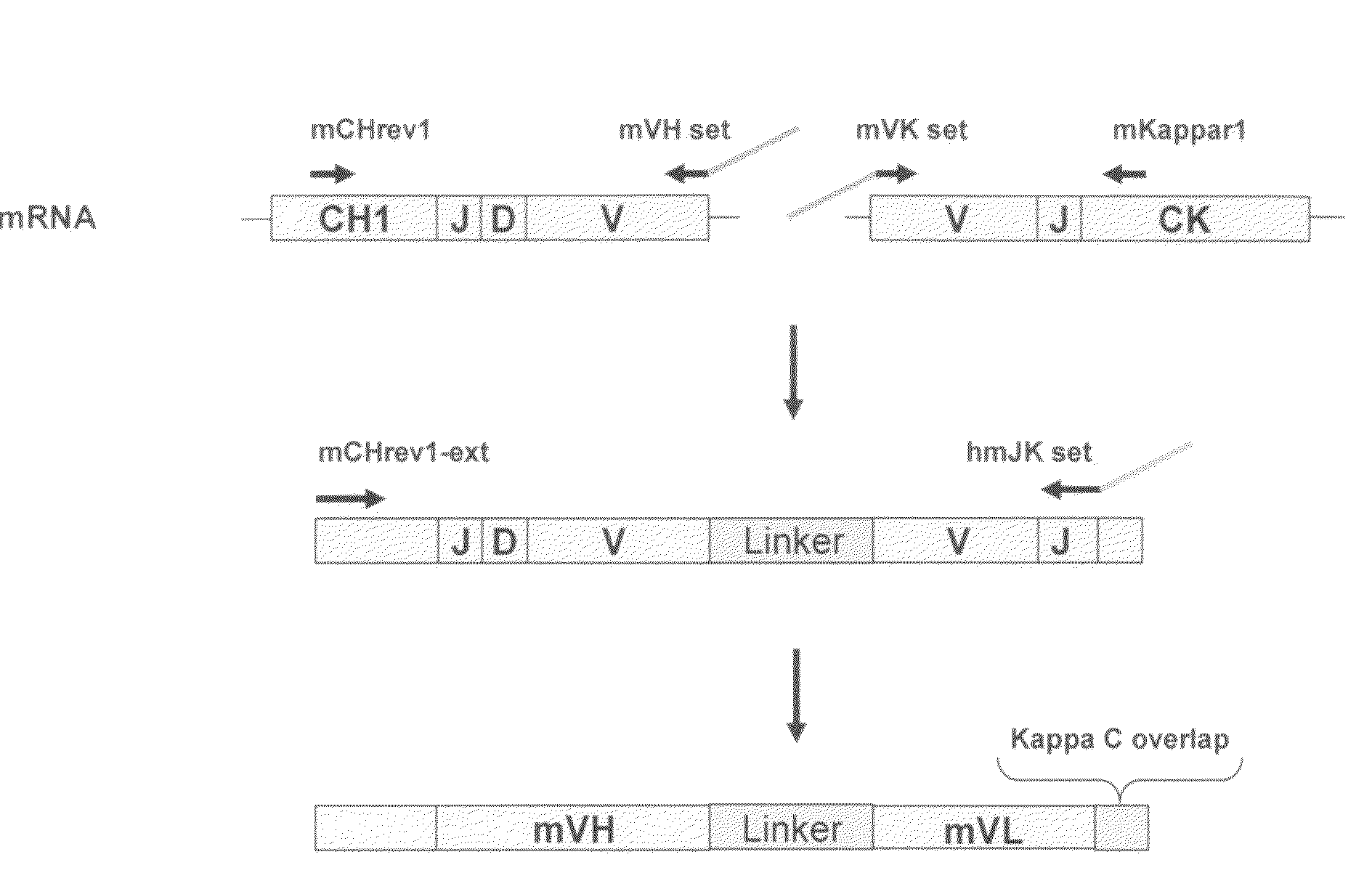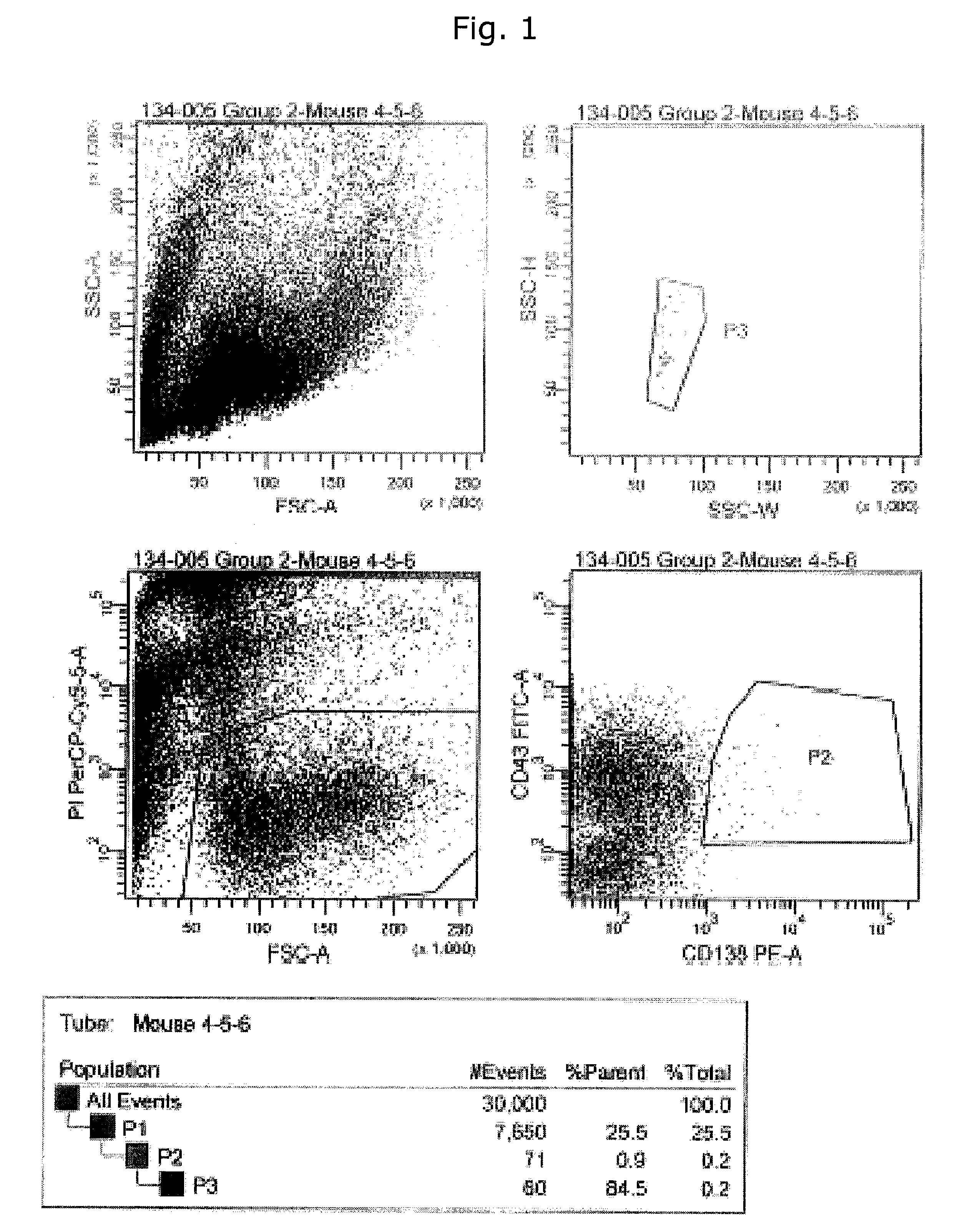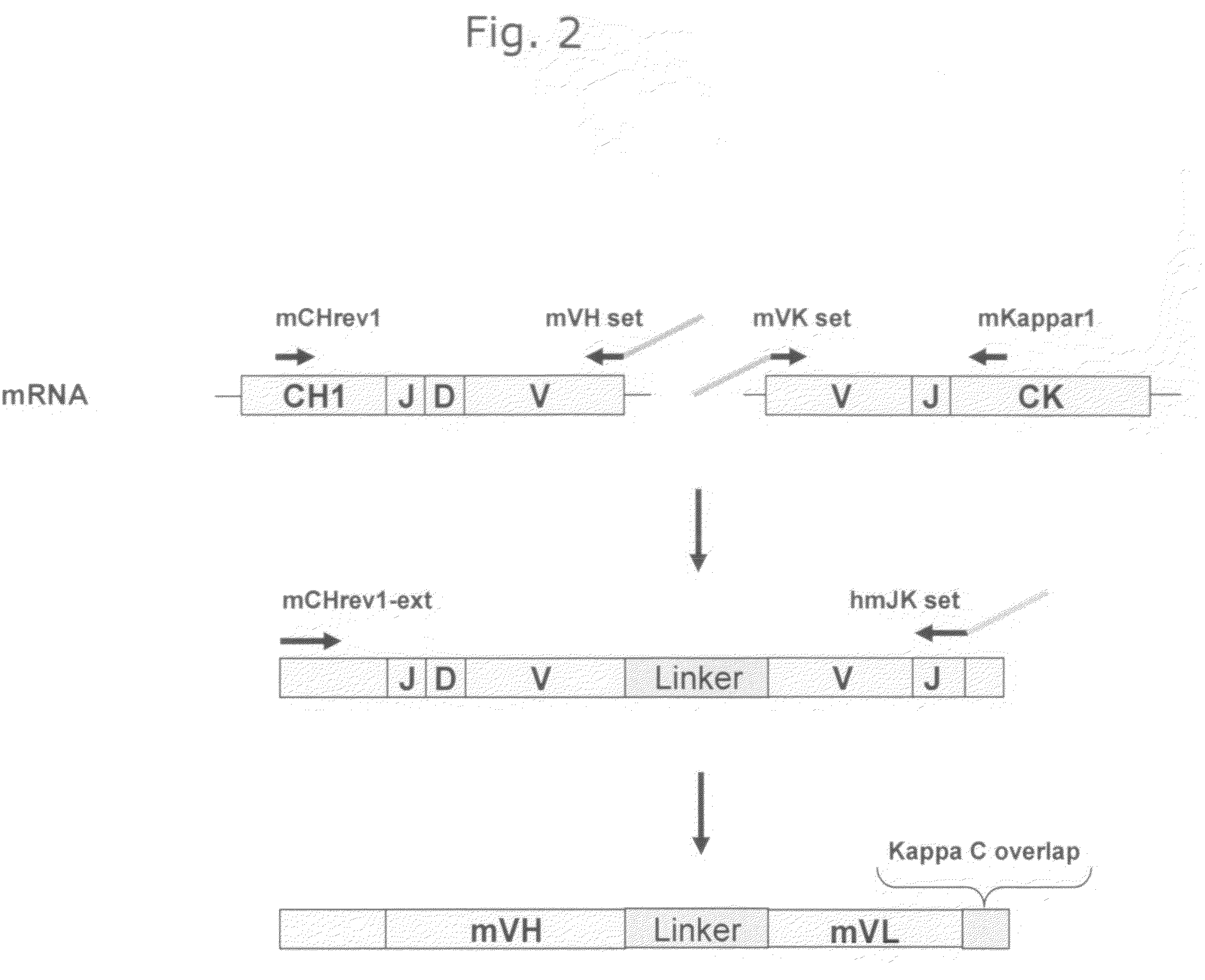Recombinant anti-epidermal growth factor receptor antibody compositions
a growth factor receptor and recombinant technology, applied in the field of human cancer therapy, can solve the problems of differential exposure of epitopes, monoclonal antibodies will not necessarily be effective against non-mutated egfr, and cannot effectively target cancer cells exhibiting a variety of conformations, so as to protect against egf induced phosphorylation, protect against phosphorylation, and protect against phosphorylation
- Summary
- Abstract
- Description
- Claims
- Application Information
AI Technical Summary
Benefits of technology
Problems solved by technology
Method used
Image
Examples
example 1
Cloning of Anti-EGFR Antibodies
Immunizations
[0308]Female BALB / c, strain A, or C57B16 mice (8-10 weeks old) were used for immunizations by injections with different purified proteins in addition to EGFR overexpressing cells.
[0309]Commercially available EGFR proteins (R&D systems cat#1095-ER or Sigma #E3641) were used for some of the immunizations. For other of the immunizations recombinant human EGFR and EGFRvIII produced as fusion proteins were used consisting of the ECD of EGFR or EGFRvIII and human growth hormone (hGH), also including a Tobacco Etch Virus (TEV)-cleavage site in addition to a His-tag described in Example 10b. In some cases the ECD of EGFR was isolated by TEV-protease cleavage and subsequent purification on a Nickel column.
[0310]The human head-and-neck cancer cell line, HN5 (Easty D M, Easty G C, Carter R L, Monaghan P, Butler L J. Br J. Cancer. 1981 June; 43(6):772-85. Ten human carcinoma cell lines derived from squamous carcinomas of the head and neck.) expressing...
example 2
Mammalian Production of Anti-EGFR Antibodies
[0347]The FreeStyle MAX CHO expression system (Invitrogen) was used for transient expression of anti-EGFR antibodies. Antibodies were expressed in 200-2000 ml volume.
[0348]Approximately 24 hours before transfection CHO-S cells were passaged to reach a cell concentration of 0.5×106 cells / ml. Plasmid (1.25 μg per ml cell culture media) was diluted into OptiPro serum-free medium and mixed with a solution of FreeStyle MAX Transfection reagent as recommended by the supplier. The transfection reagents were transferred to the cell culture and supernatant were harvested 6 days later.
[0349]The expressed antibodies were purified from the culture supernatant using an affinity chromatography step employing a Protein A-Sepharose column (MabSelect Sure, GE Health Care) for purification of IgG1 molecules. The antibodies were eluted from the column using 0.1 M Glycine, 2.7. The fractions containing antibodies, determined by absorbance measurements at 280 ...
example 3
Determination of Epitope Specificities
Competition ELISA with Reference Antibodies
[0350]By using reference antibodies binding to known domains of EGFR as published in (J. R. Cochran et. al., JIM 2004: 287; 147-158), a competition ELISA was developed that could distinguish between the binding epitopes of anti-EGFR antibodies by incubation with a secondary reagent that was specific for the human Fc region of Anti-EGFR antibodies and exhibiting no cross reactivity to mouse or rat IgG Fc. The ELISA was adapted from the descriptions published in Ditzel et al, 1995, The Journal of Immunology, Vol 154, Issue 2 893-906.
[0351]An epitope blocking ELISA was performed by diluting full length EGFR receptor antigen to 0.5 μg / ml in PBS; and coating 50 μl / ELISA well overnight at 4° C. The next morning wells were washed twice with PBS-T and blocked for one hour with PBS-T-1% BSA at room temperature followed by wash twice in PBS-T. Next 25 μl murine or Rat reference mAbs were added to independent ELIS...
PUM
| Property | Measurement | Unit |
|---|---|---|
| molecular weight | aaaaa | aaaaa |
| molecular weight | aaaaa | aaaaa |
| molecular weight | aaaaa | aaaaa |
Abstract
Description
Claims
Application Information
 Login to View More
Login to View More - R&D
- Intellectual Property
- Life Sciences
- Materials
- Tech Scout
- Unparalleled Data Quality
- Higher Quality Content
- 60% Fewer Hallucinations
Browse by: Latest US Patents, China's latest patents, Technical Efficacy Thesaurus, Application Domain, Technology Topic, Popular Technical Reports.
© 2025 PatSnap. All rights reserved.Legal|Privacy policy|Modern Slavery Act Transparency Statement|Sitemap|About US| Contact US: help@patsnap.com



